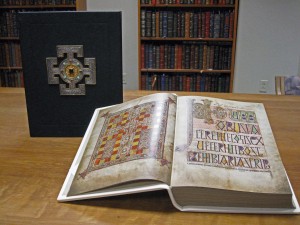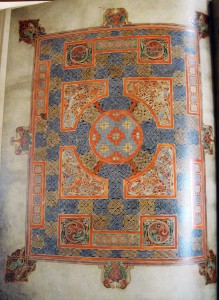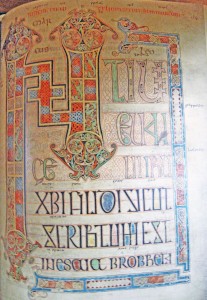A selection of rare materials from McHugh Special Collections is currently on view in the Library’s 5th floor Heritage Room. This week we are highlighting two fine art facsimiles from the exhibit “From Medieval to Modern”: The Book of Kells and The Lindisfarne Gospels.
In 1997, Special Collections acquired a fine art facsimile of the Book of Kells, donated by the estate of Charles J. Buckley, a dean emeritus who served the University in a variety of academic and administrative positions for 46 years.
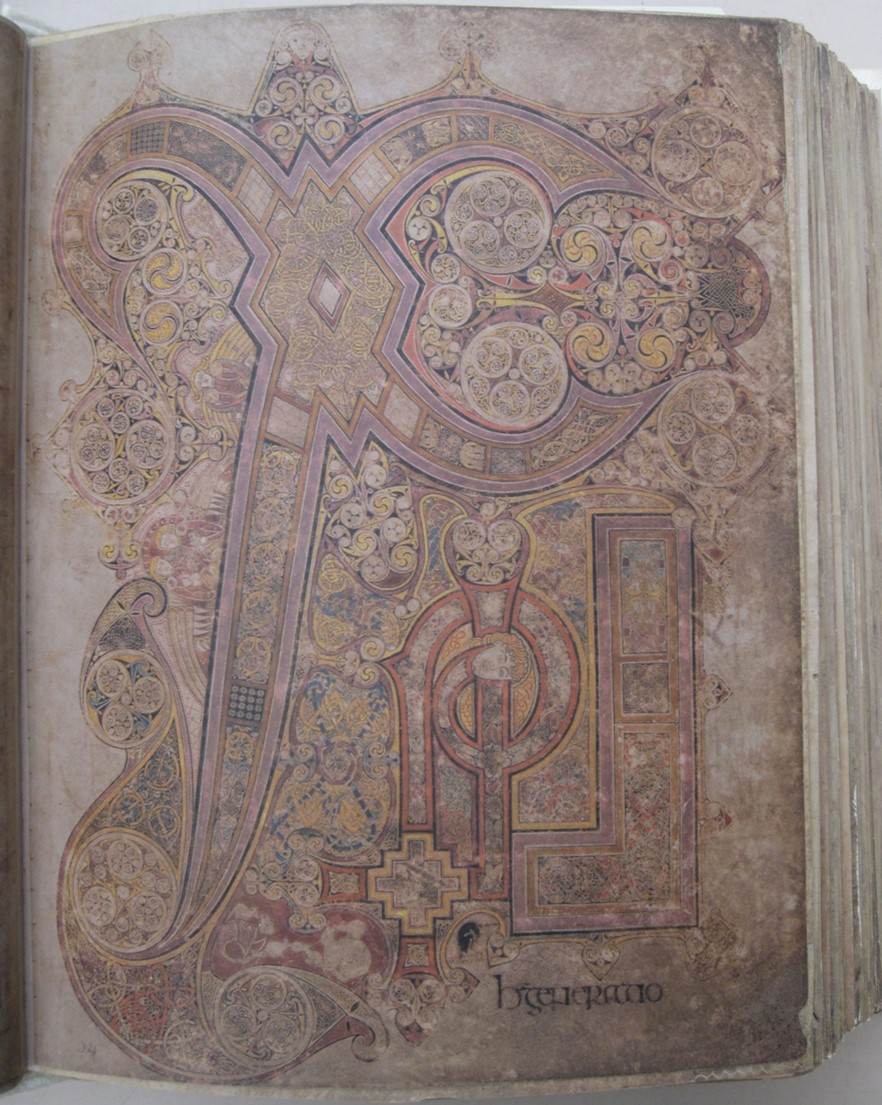
The original Book of Kells is believed to have been created around 800AD on the island of Iona off the coast of Scotland. Since the 17th century, it has been stored in the Library of Trinity College in Dublin. It is one of the world’s most famous illuminated manuscripts and is considered one of the greatest artistic productions of the Medieval period. The Book of Kells is a masterwork of Western calligraphy and represents the pinnacle of Insular illumination. It is also widely regarded as Ireland’s finest national treasure. The illustrations and ornamentation of the Book of Kells surpass that of other Insular Gospel books in extravagance and complexity. The decoration combines traditional Christian iconography with the ornate swirling motifs typical of Insular art. Figures of humans, animals and mythical beasts, together with Celtic knots and interlacing patterns in vibrant colors, enliven the manuscript’s pages. Many of these minor decorative elements are imbued with Christian symbolism and so further emphasize the themes of the major illustrations.
Only 1,480 copies of the facsimile of the Book of Kells were produced by the Fine Art Facsimile Publishers of Switzerland. The facsimile is owned by some of the most prestigious institutions in the United States, including New York’s Morgan Library and the Metropolitan Museum of Art. The facsimile edition took 10 years to produce and is considered to be indistinguishable from the original under museum viewing conditions. This accuracy extends to duplicating any damage and holes that appear in the original. The pages of the facsimile are identical in size and shape to the original manuscript pages. Of most importance to the viewer, however, is the impeccable color reproduction of the photographs. A special photographic book cradle was manufactured to hold the original safely. Kodak Ektachrome color transparencies were color corrected electronically, then passed to a lithographer who made additional color corrections by hand using as many as 10 printing inks per page. As the lithographer perfected the color balance, examples of the pages were compared with the original to fine-tune the color. After the pages were duplicated, they were sewn into gatherings hand-bound in a white skin, a book construction similar to the original.
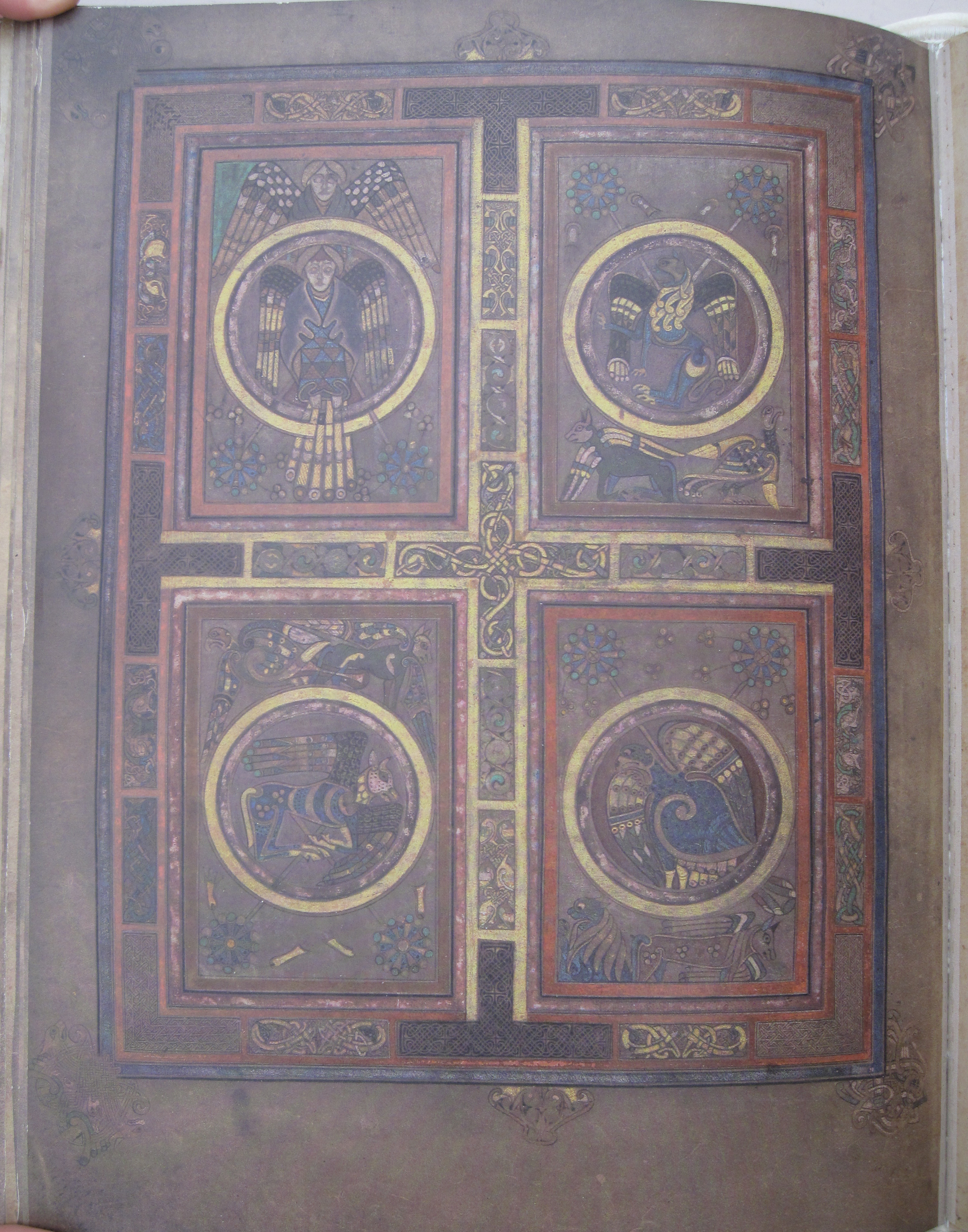
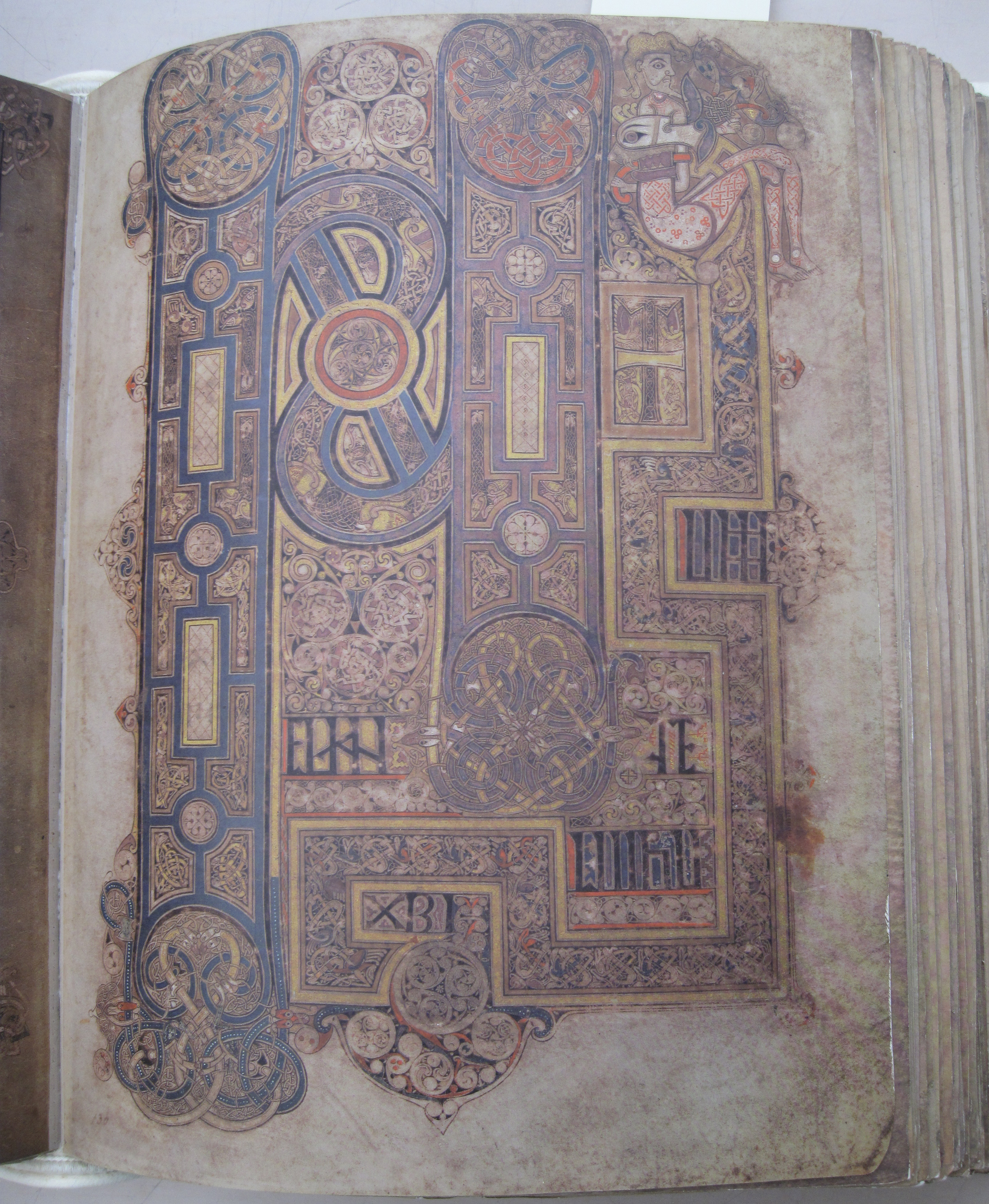
The Weinberg Memorial Library Special Collections recently received an extraordinary gift in honor of the 20th anniversary of the Library. Dr. Midori Yamanouchi, Friends of the Weinberg Memorial Library Board Member, provided funding for the acquisition of a fine art facsimile of the Lindisfarne Gospels. The original Lindisfarne Gospels is at the British Library in London and it is one of the most important and one of the best-preserved early medieval manuscripts.
 The Lindisfarne Gospels is an Illuminated manuscript gospel book created approximately 715-720 AD in a monastery at Lindisfarne off the coast of England. It is considered one of the best early versions of St. Jerome’s Latin Vulgate. The Lindisfarne Gospels also includes an interlinear Old English translation of the Gospels. This word-for-word English gloss was added to the Gospels around 950-970 AD. It is the oldest known translation of the Gospels into English.
The Lindisfarne Gospels is an Illuminated manuscript gospel book created approximately 715-720 AD in a monastery at Lindisfarne off the coast of England. It is considered one of the best early versions of St. Jerome’s Latin Vulgate. The Lindisfarne Gospels also includes an interlinear Old English translation of the Gospels. This word-for-word English gloss was added to the Gospels around 950-970 AD. It is the oldest known translation of the Gospels into English.
The fine art facsimile of the Lindisfarne Gospels was produced in 2002 by Faksimile Verlag of Luzern Switzerland, a company that specializes in the highest quality reproductions of liturgical medieval manuscripts. The facsimile was produced in cooperation with the British Library using state of the art digital photographic technology.


To read more about the Weinberg Library’s Rare Book Collection visit our collection page here. “From Medieval to Modern” will be on display during normal library hours through Tuesday, April 25. On Tuesday, April 11th, Special Collections Librarian Michael Knies will discuss the exhibit at 6 p.m. in the Heritage Room of the Library. A reception will immediately follow the talk. This event is free and open to the public. For more information, please email michael.knies@scranton.edu or call 570- 941-6341.


